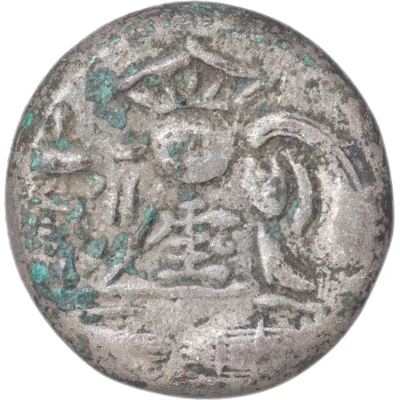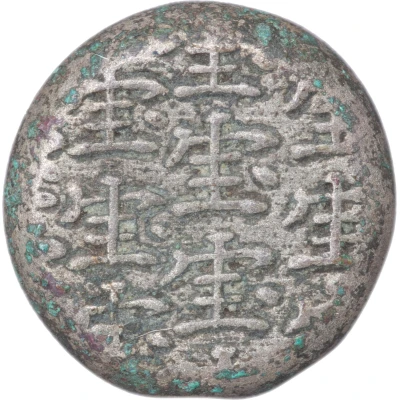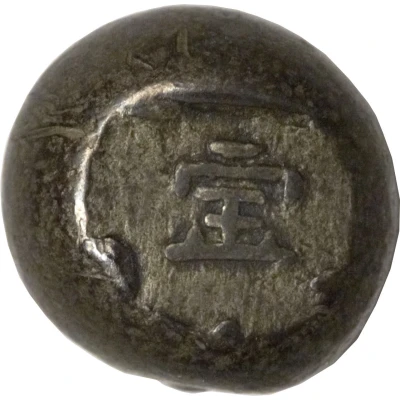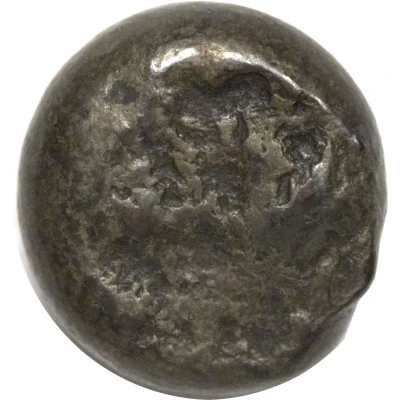


© Ginza Coin Auctions
Mameitagin "Hōei Mitsuhō Mameitagin" 宝 cluster ND
| Billon (.320 silver) | - | - |
| Issuer | Japan |
|---|---|
| Type | Standard circulation coin |
| Years | 1710-1711 |
| Currency | Monme Silver / Monme-Gin / Ginme (1601-1874) |
| Composition | Billon (.320 silver) |
| Shape | Round (irregular) |
| Technique | Hammered (bean) |
| Orientation | Medal alignment ↑↑ |
| Demonetized | 4 February 1723 |
| Updated | 2024-10-05 |
| Numista | N#288021 |
|---|---|
| Rarity index | 97% |
Reverse
Cluster of same characters
Lettering:
宝 宝 宝
宝 宝 宝
宝 宝 宝
Translation: Hō
Interesting fact
One interesting fact about the Mameitagin coin is that it was issued during a time of economic reform in Japan, known as the Hōei era (1704-1711), which aimed to stabilize the currency and stimulate trade. The coin's unique blend of 32% silver and 68% copper, known as billon, was a deliberate choice to increase the coin's durability and resistant to counterfeiting, as silver was a valuable and sought-after metal at the time. This blend of metals also gave the coin a distinctive color and texture that set it apart from other coins in circulation.

